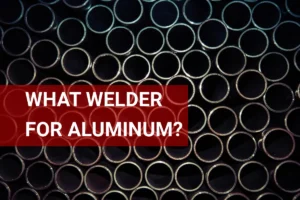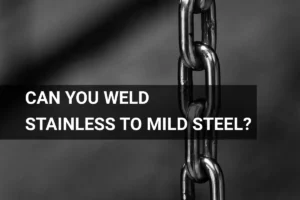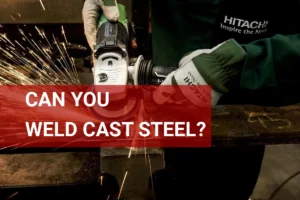Can You Weld Ductile Iron? Exploring Types, Techniques, and Tips
Published on: March 26, 2025 | Last modified: March 4, 2025
By: Joe Carter
Ductile iron is a type of cast iron known for its strength and flexibility. It contains graphite in spherical forms, which gives it better ductility than regular cast iron.
Now, can you weld ductile iron? It’s important to know if it can be welded, as many industries use this material for pipes and fittings. In my experience, weldability varies based on the type and preparation, so understanding the right techniques can make a big difference.
In this guide, we’ll discuss the weldability of ductile iron, types and their properties, prerequisites for welding, safety measures, the steps to weld, factors affecting weldability, common issues, aftercare, benefits, real-world applications, and even alternatives to welding ductile iron. We’ll also touch on the question, can ductile iron pipe be welded, to clarify these points.
Contents
- Can You Weld Ductile Iron?
- What is Ductile Iron?
- Types Of Ductile Iron and Their Weldability
- Prerequisites
- Steps to Weld Ductile Iron
- Safety Measures
- Types Of Welding for Ductile Iron
- Factors Affecting Weldability Of Ductile Iron
- What Could Go Wrong: Common Issues
- Aftercare, Inspection, and Advanced Tips for Ductile Iron Welding
- Welding Parameters for Ductile Iron
- Benefits Of Welding Ductile Iron
- Real-world Uses for Ductile Iron
- Exploring Alternatives to Welding Ductile Iron
- Frequently Asked Questions (FAQs)
- Conclusion
- References
Can You Weld Ductile Iron?
Yes, you can weld ductile iron, but it’s tricky. The high carbon content makes it likely to crack. Use preheating and choose the right filler metal. Stick to low hydrogen rods for a successful weld.
What is Ductile Iron?
Ductile iron, also known as nodular cast iron, is a type of cast iron with enhanced ductility due to its unique microstructure. This material typically contains 3-4% carbon and about 1.8-2.2% silicon. Adding small amounts of magnesium during the casting process transforms graphite into nodules, giving ductile iron impressive tensile strength, often around 414 MPa (60,000 Psi). Compared to traditional cast iron, ductile iron can be up to 50% stronger, making it ideal for various industrial applications.
You might wonder about the welding capabilities of ductile iron. I’ve found that welding it can be tricky. The right technique and filler materials are essential for ensuring the weld joint’s strength and durability, but achieving a strong bond is possible.
I’ve seen a friend use ductile iron to make custom parts in his machining shop, and it worked perfectly. While exploring the welding of ductile iron pipe, he discovered that pre-heating can minimize cracking during the welding process. The connection between welding and the unique properties of ductile iron really amazed me—understanding how to work with this material opens up numerous possibilities in fabrication!
Types Of Ductile Iron and Their Weldability
What are the types of ductile iron and their welding characteristics?
-
Ferritic Ductile Iron
Ferritic ductile iron has low thermal expansion and good toughness. You can weld this type. To weld ferritic ductile iron, use a low-hydrogen electrode, preheat to about 350°F (175°C), and control the heat input to avoid cracking.
If you are seeking a reliable source to obtain high-quality metal stock for such specific welding projects, consider exploring options for buying metal for welding.
-
Austempered Ductile Iron
Austempered ductile iron offers high strength and toughness due to its special heat treatment. You can weld this alloy, but it’s tricky. Preheat to around 450°F (230°C) and use high-strength filler material like ER70S-6.
-
Nodular Ductile Iron
Nodular ductile iron is noted for its toughness and wear resistance. You can weld this type, but be cautious. Preheat to about 500°F (260°C) and use a suitable ductile iron welding rod for the best results. Proper techniques are essential when learning about how to heliarc weld.
-
Close-grained Ductile Iron
This type has a fine structure for enhanced strength. Welding is possible, but care is needed. Preheat to roughly 400°F (200°C) and follow up with controlled cooling to prevent distortion.
-
Alloyed Ductile Iron
Alloyed ductile iron contains additional elements, enhancing its properties. You can weld this type, but with specific precautions. Preheat to about 600°F (315°C) and use specialized welding wire suitable for alloyed compositions.
So far we covered the different types of ductile iron and their weldability. Next, let’s look at the prerequisites.
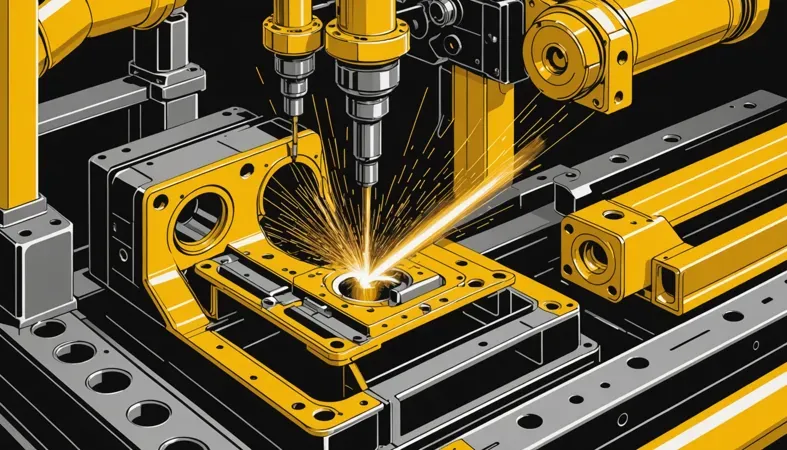
Prerequisites
What do you need to get started?
- Ductile Iron Welding Rod: Use a rod like the Hobart 4043 or Lincoln Electric 4047. It’s essential for producing strong welds on ductile iron (Typically C: 0.2 – 0.5%).
- Pre-Heater: A propane torch or induction heater is necessary to raise the ductile iron’s temperature. Pre-heating to about 232°C (450°F) helps reduce cracking.
- Welding Machine: Equip yourself with a MIG or TIG welder, such as the Miller Multimatic or Lincoln Power MIG. Look for a machine that can handle 200-250 amps for optimal results on thick sections.
- Metal Cleaner or Grinder: Use a wire brush or angle grinder (Minimum 10 Cm (4-inch) wheel) to clean the surface before welding. This removes impurities and ensures a strong bond.
- Heat Sink: An aluminum heat sink, like a 6061 aluminum block, helps manage heat during welding. It prevents warping and keeps the material stable.
We have now covered the prerequisites for welding. Next, we will examine the steps to weld ductile iron.
Steps to Weld Ductile Iron
Here are the steps to successfully weld ductile iron. Follow them closely for the best results.
-
Preheat the Ductile Iron
Preheat your ductile iron to around 240-300°C (464-572°F). This reduces thermal stress and smooths the welding process. This step is crucial to avoid cracking. Ensure the entire area to be welded reaches this temperature for optimal results.
While focusing on your technique and the quality of the weld, it’s important to consider the potential risks to your vision. Discover more about how welding can affect your eyes to ensure comprehensive safety measures.
Use a temperature gauge to monitor the heat, making sure no part is overlooked. Skipping this step can lead to warping or cracking during welding. Invest time in this preliminary process!
-
Select the Right Welding Rod
Choose a welding rod specifically designed for ductile iron, like EUTECTIC 680. Using a compatible rod ensures a strong joint. A rod with nickel content enhances ductility and strength. For standard setups, consider 3.2 mm (1/8 Inch) diameter rods.
To effectively remove or modify existing welds when adjustments are necessary, it is essential to understand how to cut welds.
The right rod makes a significant difference. Using the wrong type risks creating weak welds that can fail under stress. Check the manufacturer’s guidelines for the rod you choose!
-
Weld With Controlled Heat
Weld using a stringer bead technique while avoiding excess heat. Keep your welding arc length short—around 3-5 mm (0.12-0.2 inches) is ideal. A constant travel speed prevents overheating, which is crucial when performing welding by metals. Too much heat can weaken the metal.
It’s also essential to understand the potential hazards associated with working on certain metals, as improper handling of materials like galvanized steel can be dangerous. For further information on welding galvanized steel hazards, explore comprehensive resources to stay safe.
.
Keep the torch angle at about 15 degrees while moving to help the molten metal flow better and fill gaps uniformly. A steady hand ensures even welds; small adjustments can make a big difference!
-
Perform Interpass Heating
After finishing each bead, perform interpass heating at about 180-220°C (356-428°F). This maintains the joint temperature and prevents hardening. This step is especially important with thicker sections where heat retention is key.
Check that the metal doesn’t cool too much between passes. Failing to keep a consistent temperature can lead to brittle welds. Take your time here; it pays off!
-
Cool Down Gradually
Allow the welded piece to cool slowly in ambient air, avoiding rapid cooling methods like water. Rapid cooling can lead to cracks or warping. While it’s tempting to speed this up, patience is crucial for maintaining integrity.
Wrap the weld with insulating blankets to slow the cooling process. Proper cooling significantly improves the strength of your finished weld. Don’t cut corners here, or you might regret it later!
We covered the procedure for welding ductile iron, including techniques and equipment. Next, we will cover safety measures.
Safety Measures
Let’s cover essential precautions for welding ductile iron.
- Protective Gear: Wear a welding helmet with at least a shade 10 lens to protect your eyes from sparks and UV light.
- Adequate Ventilation: Ensure proper airflow in your workspace to avoid toxic fume buildup. Use exhaust fans and ducting as needed.
- Proper Equipment: Use tungsten or aluminum for better results. I recommend Titanium’s Weld-It kit for reliability.
- Check for Oil or Grease: Clean surfaces are crucial. Remove contaminants to avoid weak welds—use degreasers like Krud Kutter.
Always prioritize safety precautions—they’re vital for staying protected while welding!
That covers safety precautions and protocols. Let’s now take a look at the different types of welding for ductile iron.
Types Of Welding for Ductile Iron
Let’s explore the types of welding techniques: MIG, TIG, Stick, Flux-Cored Arc, and Submerged Arc welding.
-
MIG Welding
MIG (Metal Inert Gas) welding uses a continuous wire feed. It’s fast and ideal for thin materials. Good penetration and minimal post-weld cleanup make it a favorite for ductile iron.
-
TIG Welding
TIG (Tungsten Inert Gas) welding offers precise control and uses a non-consumable tungsten electrode. It’s perfect for intricate welds in ductile iron, producing clean and strong joints.
-
Stick Welding
Stick welding, or Shielded Metal Arc Welding (SMAW), is versatile and great for outdoor projects. It uses coated electrodes to protect the weld from contaminants. However, be mindful of slag removal on ductile iron.
-
Flux-cored Arc Welding
Flux-Cored Arc Welding (FCAW) uses a tubular wire filled with flux. It’s similar to MIG, but better for outdoor work. This method allows for a consistent arc, making it suitable for repairs on ductile iron pipelines. Proper safety measures are crucial when welding, especially regarding eye protection, as explained in this discussion about welding without a mask.
-
Submerged Arc Welding
Submerged Arc Welding (SAW) is efficient for large sections of ductile iron. The process covers the weld with flux, reducing spatter and improving penetration. For those interested in its applications on structural materials, this welding technique is particularly useful for heavy structures and is often compared to steel welding due to its efficiency and effectiveness.
Factors Affecting Weldability Of Ductile Iron
What factors influence effective and efficient welding of ductile iron?
-
Carbon Content
Carbon levels in ductile iron range from 3.0% to 4.0%. Higher carbon affects strength and can cause cracks during welding.
-
Silicon Content
Silicon in ductile iron varies from 2.0% to 3.0%. This element enhances fluidity in the molten state but can increase brittleness post-welding if levels are too high.
-
Welding Temperature
Maintain a welding temperature between 1200°C to 1500°C (2192°F to 2732°F). Too low a temperature can cause incomplete fusion, while too high can lead to excessive oxidation.
-
Cooling Rate
The cooling rate is crucial for avoiding brittle structures. A slower cooling rate generally results in better mechanical properties. Rates of 5°C to 10°C (41°F to 50°F) per minute are preferred.
-
Weld Joint Design
Good weld joint design, including a beveled edge, ensures proper penetration. Proper design prevents stress concentrations that can lead to failures during service.
What Could Go Wrong: Common Issues
Now let’s look at the specific problems related to ductile iron welding.
-
Poor Fusion
Poor fusion occurs in ductile iron when insufficient heat fails to merge the base metal. To fix this, increase the heat input. Use a visual exam or ultrasonic testing to locate poorly fused areas.
-
Cracking in Weld Area
Cracking is a unique issue with ductile iron, often caused by rapid cooling. I recommend using preheating and post-weld heat treatment to mitigate this risk. Look for visible cracks or use dye penetrant inspection to detect them early.
-
Inadequate Cleaning
Inadequate cleaning can lead to contamination in ductile iron welds. Always clean the joint area thoroughly with a wire brush or grinder before welding. Check for grease, paint, and rust.
-
Inconsistent Weld Bead
Inconsistent weld beads in ductile iron can arise from poor technique or erratic travel speed. Focus on maintaining a consistent travel speed and angle. Use gauge tools to ensure bead uniformity.
-
Porosity in Weld
Poorly shielded ductile iron welds can develop porosity, identified by tiny holes in the weld. To resolve this, ensure proper shielding gas flow and avoid drafts during welding.
Aftercare, Inspection, and Advanced Tips for Ductile Iron Welding
Here’s key information on what to do after welding ductile iron.
Aftercare Tips
After welding, heat-treat the joint to prevent cracking. Maintain a temperature above 1,200°F (650°C) for 30 minutes, then cool slowly. Use a compressor with a nozzle set at 80 PSI (Pounds Per Square Inch) to purge any residual gases from the weld area.
Inspection
Inspect the bond using a magnetic particle inspection (MPI) kit to detect surface and near-surface flaws. Ensure at least 100% penetration along the fusion line with the standard MPI solution. I trust the Everlast brand for reliability in field inspections.
Expert Tips
I recommend preheating ductile iron parts to at least 500°F (260°C) before welding. Attach a backing bar made from high-alloy material to minimize shrinkage stresses. Focus on maintaining a stringer bead for thinner sections, aiming for a deposit rate of 9-10 pounds (4-5 Kg) per hour. This approach helps prevent distortion and cracking.
Welding Parameters for Ductile Iron
When welding ductile iron, understanding the right parameters can make a big difference. Let’s break down key elements.
| Welding Technique | Preheat Temperature (°F / °C) | Filler Material | Post-weld Treatment |
|---|---|---|---|
| MIG Welding | 300-400°F / 150-200°C | ER70S-6 | Slow cooling in air, no water |
| TIG Welding | 350-450°F / 175-230°C | ER80S-D2 | Heat treatment at 1,200°F / 650°C |
| Stick Welding | 450-500°F / 230-260°C | EUTECTIC 680 | Slow cooling or insulating blankets |
| Flux-Cored Arc Welding | 350-450°F / 175-230°C | FCAW-ER70T-1 | Controlled cooling for 1 hour |
| Submerged Arc Welding | 500-600°F / 260-315°C | SAW wire with Chromium content | Heat retention above 1,500°F / 815°C |
Following these parameters helps ensure you get solid, reliable welds on your ductile iron projects. Remember, every little detail counts!
Benefits Of Welding Ductile Iron
The main benefit of welding ductile iron is its strength and flexibility. I’ve seen a friend use it to create heavy-duty parts that withstand high stress without breaking.
Additionally, welding ductile iron offers excellent repair capabilities, cost-effectiveness, improved joint integrity, and reduced weight compared to traditional cast iron. This means you can repair parts instead of replacing them, saving both money and time.
Real-world Uses for Ductile Iron
Ductile iron is used in various demanding applications, including:
- Drainage Pipes: Used in sewage and stormwater systems for excellent corrosion resistance. It’s popular for its flexibility and strength.
- Heavy Machinery Components: Found in truck frames and mining equipment. Welded for durability to withstand harsh conditions.
- Automotive Parts: Utilized in engine components and transmission housings. Its weldability improves assembly and reduces weight.
- Railroad Track Components: Essential for rails and switches. Welding allows for repairs, enhancing the safety and longevity of the rail system.
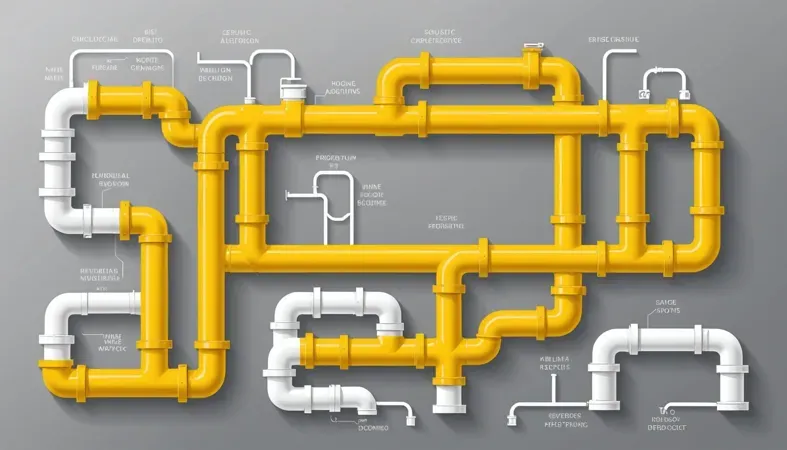
Exploring Alternatives to Welding Ductile Iron
There are various alternatives to achieve similar results. For instance, using ductile iron welding rods, like the 99M or 60-T1, can help bond ductile iron effectively without traditional welding. Additionally, soldering techniques with low-temperature metals, such as silver solder, may be preferred for smaller repairs or sensitive applications.
Another option is epoxy and adhesive bonding, which works great for non-structural applications. Products such as Loctite Plastic Bonder can create strong joins without heat. In cases of leaking pipes, mechanical fittings or flanges are also reliable choices to avoid the headaches associated with thermal distortion.
Frequently Asked Questions (FAQs)
Now let us look at some common questions I typically get asked.
Can Ductile Iron Pipe Be Welded?
Yes, ductile iron pipe can be welded. However, it requires preheating to about 150°C (302°F) to prevent cracking and ensure a solid bond. The right filler material and techniques, like shielded metal arc welding, are essential for optimal results. Understanding the science behind forge welding techniques can further enhance the quality of welds in metalworking.
Can You TIG Weld Ductile Iron?
Yes, you can TIG weld ductile iron. This process offers great precision and excellent control over the weld pool. It’s best performed at temperatures around 200°C (392°F) for the best results, ensuring strong joints without excessive distortion. Mastering such techniques necessitates understanding the nuances of welding thin metal effectively.
Why Can’t Ductile Iron Be Welded?
Ductile iron cannot be welded without precautions due to its susceptibility to cracking. Without proper preheating and cooling strategies, welds can fail under stress. Understanding its carbon content and heat treatment is crucial to mitigate this challenge. For those needing to solve the challenge of welding in difficult positions, you might explore techniques on how to weld upside down.
Which Iron Cannot Be Welded?
Malleable iron often presents welding challenges. Its high silicon content creates issues with weld penetration and fusion. Instead of welding, consider using mechanical connections as a reliable alternative for joining malleable iron components.
Can Malleable Iron Be Welded?
No, malleable iron is generally not suitable for welding. Its structure tends to cause brittleness at the weld joint, leading to cracks. If you must join malleable iron, explore options like brazing or using mechanical fasteners.
Is Ductile Iron Considered Steel?
No, ductile iron isn’t considered steel. Ductile iron is categorized as a type of cast iron, primarily because of its graphite structure. While both materials have similar uses in construction and manufacturing, their properties differ significantly.
Conclusion
We’ve gone through a lot, thank you for sticking it out. We covered what ductile iron is, different types of ductile iron and their weldability, prerequisites for welding, steps for welding, safety measures, types of welding for ductile iron, factors affecting weldability, common issues, aftercare, inspection, advanced tips, benefits, real-world uses, and even alternative options. Each point gives you insight into the critical aspects of welding ductile iron.
So, can you weld ductile iron? Yes, you can, but it requires specific techniques like preheating and using the right filler metal. With factors such as composition and temperature playing important roles, it’s important to follow proper steps for successful welding. Don’t hesitate to get in touch for further assistance about welding ductile iron or any of your related questions.
For more comprehensive insights into the world of welding, we invite you to explore our homepage: What is Welding.
References
- American Society of Mechanical Engineers. (2019). ASME Section IX: Welding and Brazing Qualifications. New York, NY: ASME.
- American Petroleum Institute. (2018). API 1104: Welding of Pipelines and Related Facilities. Washington, DC: API.
- Parmar, R. S. (1997). Welding Engineering and Technology. New Delhi, India: Khanna Publishers.
Joe Carter is a retired welding professional with over 40 years of hands-on experience in the industry, spanning ship repair, structural welding, and even underwater projects. Joe is a master of MIG, TIG, and Stick welding. Passionate about mentoring the next generation of welders, Joe now shares his decades of expertise and practical insights to help others build rewarding careers in welding.
Adhesive Bonding, Ductile Iron, Industrial Applications, MIG Welding, Safety Measures, Weldability, Welding, Welding Materials, Welding Techniques, Welding Wire
